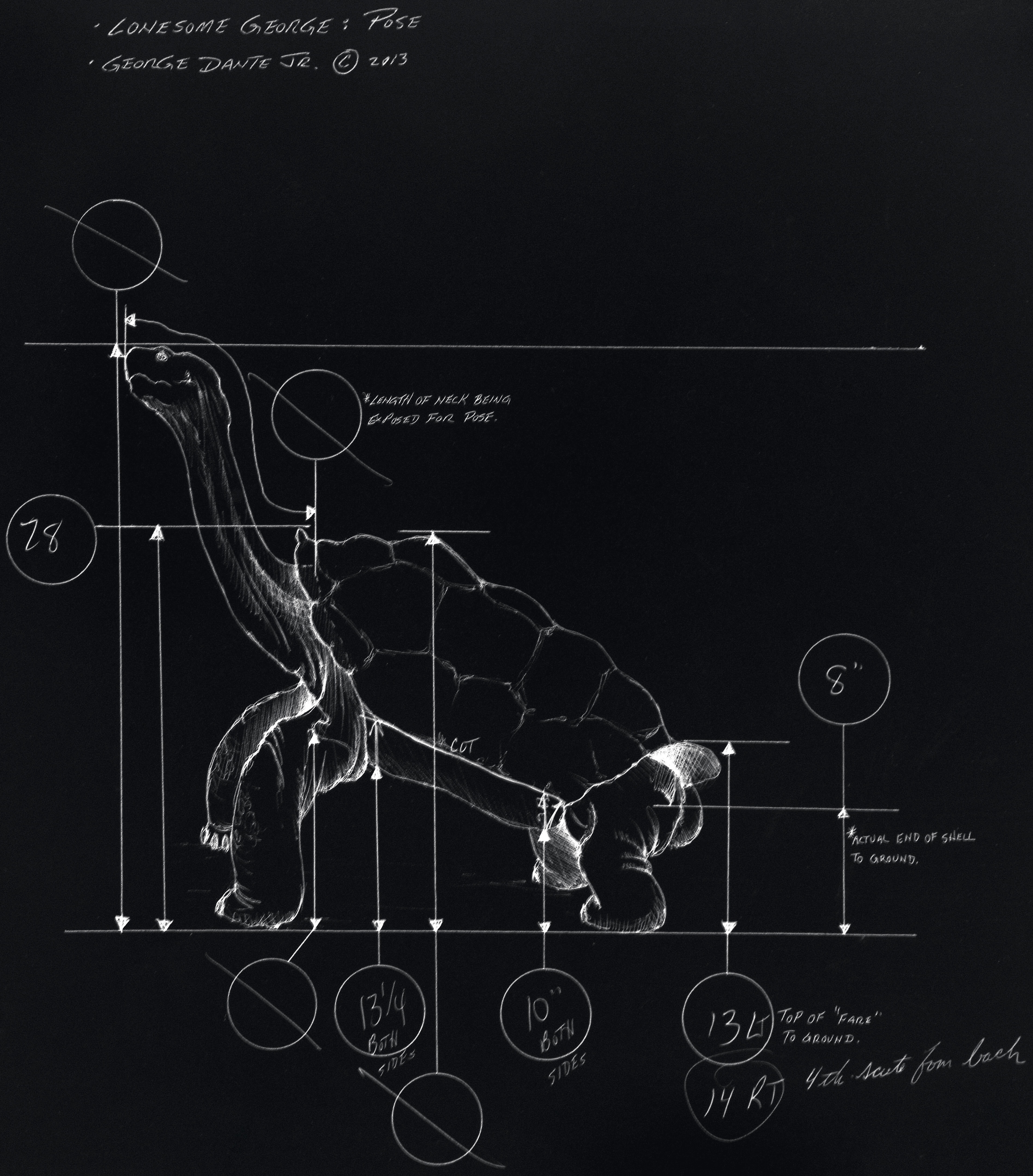Lonesome George was the last male individual of the Pinta Island tortoise. He sadly passed away in his corral at the Charles Darwin Research Station in Galápagos Islands on the morning of June 24 2012. He died from natural causes.
Lonesome George became a worldwide icon of conservation. Efforts to breed him at the Galápagos National Park and Charles Darwin Research Station concluded with no success. Thus he became “a living dead” member of his species doomed for extinction. Lonesome George became “the face of extinction”. Extinction of his species was entirely because of Humans.
Lonesome George arrived at the American Museum of Natural History in early 2013 to be preserved as a taxidermic specimen to be displayed. Preparation of such a unique specimen posed a big challenge for the museum staff. From pinning butterflies and insects to mounting a Mammoth fossil skeleton museum staff are always intrigued with challenging displays.
Taxidermists of the AMNH use a technique invented by the influential naturalist Carl Akeley. The technique involves casting of the specimen to capture and reflect the natural pose of this beloved animal. Akeley was also the inventor of the legendary Akeley gyroscope cameras.
“I think it is difficult for an artist not to be emotionally involved with the project… Not to get emotionally attached to this… It just wasn’t going to happen.” — George A. Dante, Jr.
As the project rolled, Lonesome George’s preparators developed an emotional connection to the animal. They also felt a deep responsibility towards Lonesome George’s former caretakers, to the people of Ecuador, as well as to future generations who might be inspired by Lonesome George’s story. Before the specimen was put on display during a temporary exhibition at the American Museum of Natural History, the work of Museum staff was put to the test. A drum roll moment came when Lonesome George was viewed by some of his former keepers.
Lonesome George will stand as a reminder of the tragic history of Galapagos tortoises, and inspire communities globally to preserve our natural world.



0 Comments
You can be the first one to leave a comment.